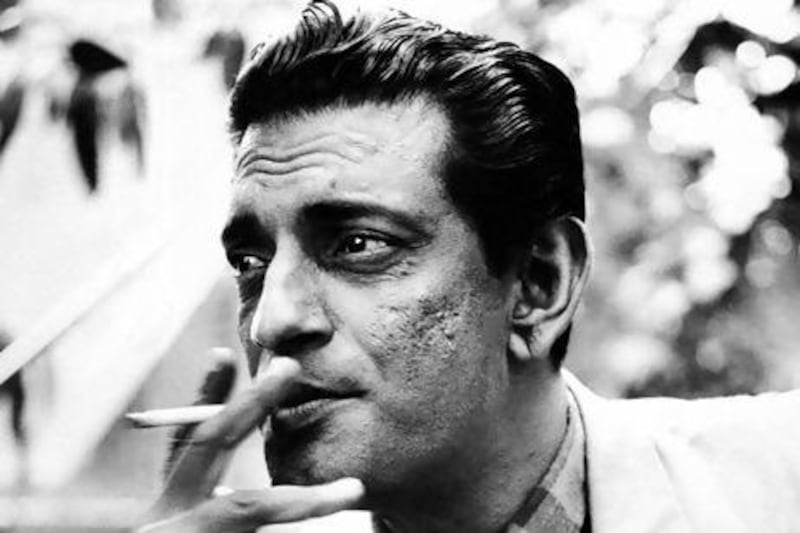Ahead of the 64th Academy Awards in 1992, Hollywood’s film directors and producers came together to nominate the Indian filmmaker Satyajit Ray for a lifetime achievement award at the Oscars. George Lucas described him as “extraordinary”, Martin Scorsese called his work “magic” and James Ivory referred to him as “among the world’s greatest directors”.
In the end, Ray, who was in Kolkata and seriously ill at the time of the awards, won an honorary Oscar – the first Indian to be awarded such an accolade – which was presented to him via video link-up by Audrey Hepburn. Reclining on his hospital bed, Ray accepted the Oscar, his words slurred but still elegant, calling the award the “best achievement” of his career. Ray had been making films since 1955.
Ray died 24 days later, but he died knowing that his work had touched audiences everywhere. Now, 21 years after his death, filmgoers will have a chance to appreciate his achievements in cinema with the launch of a Satyajit Ray season at London’s BFI (British Film Institute) Southbank, as part of a celebration of 100 years of Indian cinema.
But the BFI Southbank is not just celebrating Ray as a filmmaker. In an additional retrospective, it is also showcasing Ray’s early roots as a graphic designer and illustrator through a unique poster exhibition, featuring original prints from the BFI National Archive and facsimiles provided by the Satyajit Ray Society in Kolkata (the posters were used as adverts for his films when they were released). The exhibition reveals Ray as an artist as well as a filmmaker.
“The posters show him as a polymath figure – not only did Ray make films, but he designed his own posters for them and even created film sets and costumes. They show how he was involved with every aspect of his films and reveal a lot about the filmmaking process,” says Isabel Stevens, the production editor at the BFI who organised the exhibition. “These posters are art as much as they are adverts.”
Ray worked in advertising before he became a filmmaker and this side of his career is little known outside of India, where he is best-known for his films in The Apu Trilogy, consisting of Pather Panchali (1955), Aparajito (1956) and The World of Apu (1959), which follow the life of a young, impoverished village boy called Apu as he grows up.
“Each of the posters is a visual statement,” says Stevens. “They incorporate Indian elements in their design.”
Most of Ray's designs are simple, frequently using just one, strong image. One poster designed for Aran-yer Din Ratri (Days and Nights in the Forest), a film about four spoilt and rich Bengali bachelors who go away for a weekend, is simply a series of white silhouettes of tall trees set against a black background.
Another, for the film Charulata (The Lonely Wife), features a simple charcoal sketch of the profile of a woman set against the film's title printed in heavy, ornate Bengali calligraphy.
Stevens says Ray’s approach to the design of his posters often reflects the tone of the film being advertised: “The posters bring to the fore his visual eye. Ray’s films are so visually assured and reveal so much attention to detail and you can see that in his artwork, too. In some posters, a film is distilled into just one image while in others, the posters are simply beautiful and enigmatic without giving too much of the film away. That’s what makes Ray’s work stand out.”
Several of his posters use a similar style, of black and white floating heads of the actors and actresses taken from his film stills combined with bright calligraphy. Stevens says it’s possible Ray was influenced by contemporary pop art of the 1950s and 1960s in his designs.
It is notable that in his later posters – particularly for his penultimate film Ganashatru (An Enemy of the People), made in 1989 and about a doctor who denounces a local temple's holy water as being dirty and polluted – the Bengali script has made way for English and French, revealing his international appeal.
Stevens says she hopes the exhibition will attract a new audience of people who are not necessarily familiar with Ray. “Hopefully, the combination of his art and his films will enable Ray to reach a wider audience,” she says. “It is a good way of showing people that there are different aspects to Indian film beyond Bollywood.”
The exhibition continues until October 4. For more information on the Satyajit Ray season, visit www.whatson.bfi.org.uk/Online/satyajit-ray
Follow us
[ @LifeNationalUAE ]
And follow us on Facebook for discussions, entertainment, reviews, wellness and news.





